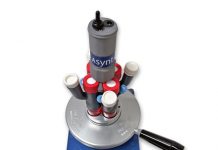Introduction to US regulations
The Environmental Protection Agency (EPA) was established in 1970, with the objective to protect human health and the environment. Regulation of both the safety of chemicals and the extent of chemical exposures to humans and the environment is a major aspect of this objective. The Clean Air Act was enacted by the US Congress that same year for the purpose of setting air quality standards.
The Agency’s work in regulating the production and importation of chemical substances is authorised under the Toxic Substances Control Act (TSCA) which was originally passed in 1976. In June 2016, President Obama sanctioned its update by ‘The Frank R. Lautenberg Chemical Safety for the 21st Century Act’, which has increased EPA’s authority to implement chemical safety under TSCA. EPA progresses safety in this field by conducting federal research, setting standards, evaluating risks of new and existing chemicals, investigating pollution prevention/reduction strategies, and writing regulations. These regulations clarify the technical and operational requirements of manufacturers and importers to ensure compliance with TSCA.
TSCA defines the term ‘manufacture’ to encompass ‘import’, indicating that importers and manufacturers of chemical substances have the same responsibilities to TSCA. Key duties are outlined below to provide insight for EU industries planning to enter the US market.
Pre-Manufacture Notification (PMN) for new chemical substances (TSCA, Section 5)
TSCA requires any chemical substance planned to be manufactured/imported for the first time in US, to be notified to EPA. EPA undertakes hazard and exposure assessments to inform any exclusions or exemptions applicable to a chemical substance or its use. The more information submitted, the faster and more accurate the assessment. EPA also encourages manufacturers/importers to meet with them, to discuss specific requirements, before PMN preparation.
Significant New Use Rules (SNURs) (TSCA, Section 5)
If, following assessment of relevant factors (such as the manufacture process, or duration of human and environmental exposure), EPA concludes that a use of a chemical substance is a ‘significant new use’ (SNU), importers/manufacturers are required to submit a notice (SNUN) at least 90 days before its manufacture/import. EPA then investigates possible risks which may be associated with the new use. If necessary, it makes appropriate adjustments, for example, prohibitions of use, amendments to labelling and Safety Data Sheet (SDS), restrictions on quantity manufactured/imported. Such limits are frequently triggers for testing requirements.
Testing of chemicals (TSCA, Section 4)
EPA may, under the authority of TSCA, request manufacturers/importers to test chemical substances, to investigate toxicity to health or the environment, chemical fate, or characteristics of certain substances. On 7th March 2018 EPA released its draft strategy to reduce animal testing and move to alternative methods and strategies; this is another requirement of the Lautenberg Act.
Record-keeping, information provision and inventory update (TSCA, Section 8)
The TSCA Inventory is updated with new chemicals following receipt of notice (Notice of Commencement (NOC)). The NOC needs to be submitted by manufacturers/importers, after completion of the PMN, and within 30 days of the first manufacture/import date. This triggers the addition of the new product onto the Inventory as an ‘existing chemical’.
TSCA directs manufacturers/importers to maintain records throughout the commercialisation of a product, and report to EPA any information indicative of risk to health or the environment.
Certification for import (TSCA, Section 13)
Importers of chemical substances into US are required to confirm that their shipment either complies with, or is not subject to, TSCA. Each import of chemicals subject to TSCA requires the signed statement, ‘I certify that all chemical substances in this shipment comply with all applicable rules or orders under TSCA and that I am not offering a chemical substance for entry in violation of TSCA or any applicable rule or order under TSCA’. EPA expects the importer to have the knowledge and documentation to support the certification and reduce risk of violation. Substances in breach of compliance with TSCA are denied entry into the customs territory of US.
Chemicals not subject to TSCA, for example, pesticides, foods, food additives, drugs, cosmetics or devices require signed ‘negative certification’ that ‘…… all chemicals in this shipment are not subject to TSCA’. Certification is not necessary for chemicals that are a part of articles (unless subject to a specific rule under TSCA).
Exceptions and specific requirements are applicable to several aspects of TSCA, but are outside the sphere of this general and introductory article. A company intending to access the US market would be advised to discuss their specific product(s) with a US regulatory representative, to ensure precision compliance with TSCA.










